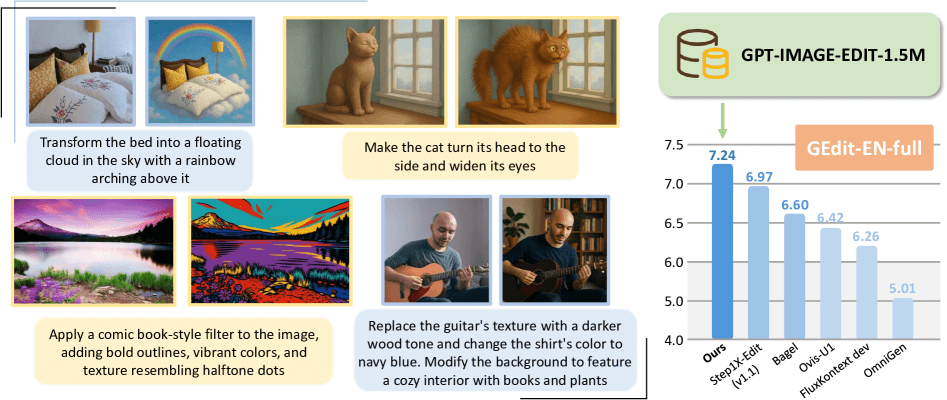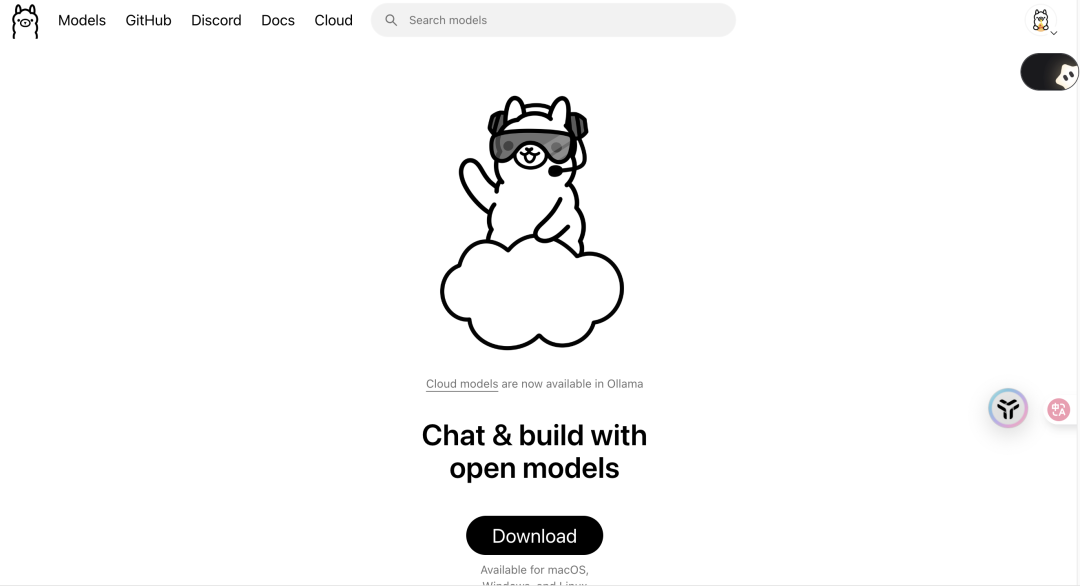GPT-Image-Edit is an open source tool hosted on GitHub and developed by user wyhlovecpp (Yuhan Wang). It is based on OpenAI's image generation technology and allows users to generate or edit images with simple text commands. The tool is suitable for developers, designers or users interested in AI image processing. The project provides an intuitive interface that allows users to upload images and implement image modifications, such as changing the background, adding objects, or adjusting the style, through descriptive text. Its core strength is that it combines the powerful image processing capabilities of AI with a simple operating process, making it suitable for quick start-ups. The project is still under development, and the code and documentation are publicly available to encourage community contributions and feedback.

Function List
- Generate brand new images with text commands.
- Supports uploading images and editing them based on text descriptions.
- Provides image style conversion functions, such as converting images to cartoon or art styles.
- Supports batch processing of images for large-scale editing tasks.
- Open source code with user customizable features or integration into other projects.
- Provide a simple API interface for developers to call.
Using Help
Installation process
To use GPT-Image-Edit, you need to clone the project and setup the development environment first. The following are the detailed installation steps:
- clone warehouse
Clone the project locally by running the following command in a terminal or command line:git clone https://github.com/wyhlovecpp/GPT-Image-Edit.git cd GPT-Image-Edit - Installation of dependencies
The project relies on the Python environment and some third-party libraries. Make sure you have Python 3.7 or above installed. Then run it:pip install -r requirements.txtThis command installs the necessary libraries, such as
openai,pillowetc. If you encounter dependency problems, you can check therequirements.txtfile to ensure that all library versions match. - Configuring API Keys
GPT-Image-Edit uses OpenAI's API and requires an API key to be configured. Users need to register with the OpenAI platform and get the key. Add the key to an environment variable or configuration file:- Create a
.envfile, write:OPENAI_API_KEY=your_openai_api_key_here - Or set it directly in the code:
client = OpenAI(api_key="your_openai_api_key_here")
- Create a
- Running Projects
After completing the configuration, run the main program file (e.g.main.py):python main.pyThe project will start a simple local interface, the exact operation may change due to code updates, it is recommended to refer to the project's
README.mdDocumentation.
Main Functions
1. Image generation
Users can generate completely new images from text descriptions. For example, to generate an image of a "castle at night under a starry sky", simply type:
prompt = "A castle under a starry night sky, in a fantasy style"
result = client.images.generate(model="gpt-image-1", prompt=prompt, size="1024x1024")
The generated image is returned in base64 encoding and the code is automatically saved as a local file (e.g. output.png). The user can adjust the size parameters (e.g. 512x512 maybe 1024x1536) control resolution.
2. Editing existing images
Users can upload a picture and modify it with text commands. For example, to add a hat to a picture of a cat:
- Upload image: Place the image file (e.g.
cat.png) into the folder specified by the project (usuallyimgs/). - Enter the edit command:
img_input = open("imgs/cat.png", "rb") prompt_edit = "Add a red hat on the cat, in a cartoon style" result_edit = client.images.edit(model="gpt-image-1", image=img_input, prompt=prompt_edit) - Save result: The edited image is saved to the specified path (e.g.
imgs/edited_cat.png).
3. Editing using masks
The Mask function allows the user to specify a specific area of the image for editing, protecting the rest from modification. Operation Steps:
- Prepare the mask image: Use image editing software (e.g. Photoshop) to create a black and white mask, with the black part indicating the area to be edited and the white part remaining unchanged. Make sure the mask contains an alpha channel.
- Code Example:
img_input = open("imgs/cat.png", "rb") mask_input = open("imgs/mask.png", "rb") prompt_mask = "Change the background to a forest scene" result_mask = client.images.edit(model="gpt-image-1", image=img_input, mask=mask_input, prompt=prompt_mask) - Note: Mask editing may not be precise enough and the model sometimes affects the content within the mask area, users are advised to test and optimize the cue word.
4. Style shifts
The user can change the image style by using cue words. For example, convert a photo to oil painting style:
prompt_style = "Convert this image to an oil painting style"
result_style = client.images.edit(model="gpt-image-1", image=open("imgs/photo.png", "rb"), prompt=prompt_style)
The resulting image retains the original content but presents the specified artistic style.
Tips for use
- Cue word optimization: The more specific the cue, the more effective the generation. For example, "a black cat sitting on a wooden table wearing a red hat with a sunset in the background" works better than "cat wearing a hat".
- batch file: The program supports processing multiple images at the same time and is suitable for users who need to edit a large number of images quickly.
- Debugging and Logging: Check the console output at runtime to make sure the API call was successful. If an error is encountered, check the API key or network connection.
caveat
- The project requires a stable network connection to call the OpenAI API.
- Make sure your OpenAI account is verified, otherwise it may not work!
gpt-image-1Model. - The project code is subject to change due to updates, and it is recommended to regularly check the GitHub repository for the latest commits.
application scenario
- content creation
Designers can utilize GPT-Image-Edit to quickly generate or modify image materials. For example, create social media posters or adjust the background of product images. - Education and Research
Students and researchers can use it to explore AI image generation techniques, test the effects of different cue words, or integrate image processing capabilities in academic projects. - game development
Game developers can quickly generate concept art or edit character images, adjusting the style to fit the game theme. - Automated workflows
Business users can integrate the tool into automated workflows to batch process product images or generate customized marketing materials.
QA
- Do I need to pay to use it?
GPT-Image-Edit itself is a free open source project, but requires an OpenAI API key, and using the API will incur a fee, depending on OpenAI's billing rates. - What image formats are supported?
Common formats such as PNG, JPEG are supported. mask files need to contain an alpha channel and are usually saved in PNG format. - How to improve the quality of generated images?
Specify styles, colors, and scenes using detailed cue words. Adjust resolution parameters (such as1024x1024) can improve image clarity. - Can it be used offline?
Offline use is not supported, and image generation and editing rely on OpenAI's cloud API.





























